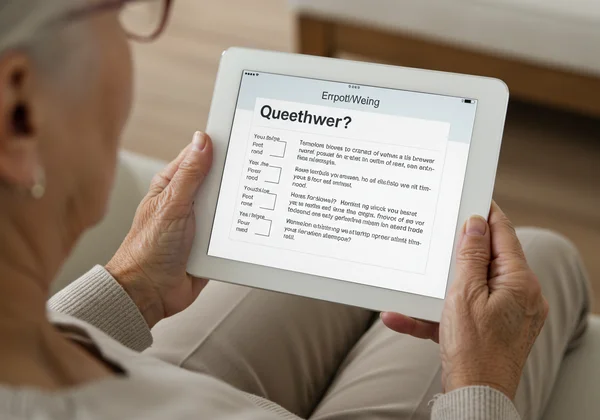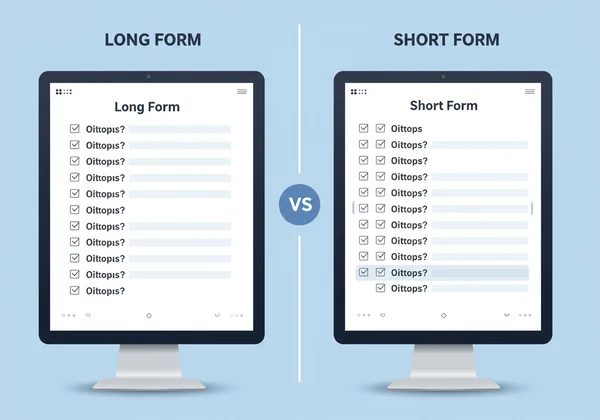Geriatric Depression Scale: History, Science & Validation
The golden years should ideally be a time of peace, reflection, and joy. Yet, for many older adults, mental health challenges can cast a significant shadow. Recognizing and addressing these issues early is crucial, requiring tools that are both sensitive and effective. This is precisely where the Geriatric Depression Scale (GDS) proves an invaluable ally. Far more than a simple questionnaire, the GDS is a scientifically engineered instrument, born from decades of research, designed specifically to uncover the emotional struggles of seniors. Understanding its history and validation is fundamental to trusting its results and appreciating its profound impact.
This article delves into the origins, scientific backing, and purpose of the GDS. We will explore its journey from a clinical idea to a global standard, giving you the confidence to use this powerful screening tool. If you're ready to see how this trusted scale works, you can try our free assessment anytime.
Understanding the Geriatric Depression Scale: A Brief Overview
The Geriatric Depression Scale (GDS) is a self-report questionnaire designed to screen for symptoms of depression in older adults. Unlike general depression scales, its questions are carefully crafted to avoid focusing on physical symptoms that can overlap with normal aging or other medical conditions. Instead, it hones in on the affective, or mood-related, aspects of depression, providing a clearer picture of an elder's emotional state. This specialized approach makes it a highly effective initial step in identifying potential mental health concerns.

Why a specialized scale for seniors?
Depression in older adults often presents differently than in younger populations. Symptoms like fatigue, sleep disturbances, or loss of appetite can be easily misattributed to physical ailments or the natural aging process. A standard depression inventory might generate a misleadingly high score by flagging these physical issues. The creators of the GDS recognized this and developed a tool that bypasses this confusion. By using a simple "yes/no" format and focusing on feelings, it provides a low-stress way for seniors to communicate their emotional well-being, paving the way for more accurate screening.
The Genesis of GDS: From Clinical Need to Gold Standard
Every significant psychological tool has an origin story, and the GDS is no exception. Its creation wasn't merely an academic exercise; it directly addressed a pressing clinical need: a reliable method to detect depression in the elderly. In the early 1980s, healthcare professionals lacked an instrument tailored to the unique psychological landscape of their older patients, leading to widespread under-diagnosis and missed opportunities for intervention.
Dr. Yesavage and the Stanford University Team
The development of the GDS is credited to a team of dedicated researchers led by Dr. J.A. Yesavage at the Stanford University School of Medicine. In their seminal 1982 paper, "Development and validation of a geriatric depression screening scale: a preliminary report," they introduced the world to this groundbreaking tool. Their work was driven by empathy and a commitment to improving the quality of life for seniors by giving them and their caregivers a voice. You can experience the result of their dedicated work with our easy-to-use GDS tool.

Initial research and development of the GDS
The creation of the GDS was a meticulous process. Dr. Yesavage's team compiled a list of 100 questions related to common depressive symptoms. They administered this extensive questionnaire to both depressed and non-depressed elderly individuals. Through rigorous statistical analysis, they identified the 30 questions that most accurately and reliably distinguished between the two groups. This careful selection process ensured that the final scale was not only comprehensive but also highly sensitive to the nuances of late-life depression.
Designing the Geriatric Depression Scale: Versions and Purpose
To meet diverse clinical and personal needs, the GDS evolved from its original form into different versions. This adaptability has been a key factor in its widespread adoption, allowing for its use in various settings, from busy clinics to quiet homes.
The original 30-item Long Form GDS
The first version developed was the Geriatric Depression Scale long form, consisting of 30 questions. This comprehensive scale provides a detailed and nuanced screening. It is often preferred in clinical research or for an initial in-depth assessment where time is not a significant constraint. Each question probes a different facet of the user's emotional state over the past week, building a thorough picture of their mental well-being.
The popular 15-item Short Form GDS
Recognizing the need for a quicker assessment tool for routine screenings or for individuals with limited time or energy, the Geriatric Depression Scale short form was developed a few years later. This 15-item version, often called the GDS-15, was derived from the questions most correlated with depression in the original long form. It has been proven to be nearly as effective as the 30-item version and is now the most widely used format in both clinical practice and for personal use. It offers a perfect balance of speed and accuracy, which you can start your assessment with now.

Scientific Validation: Ensuring Accuracy and Trust
A screening tool is only as good as the science that backs it. The GDS is not just widely used; it is widely trusted because it has been subjected to extensive GDS development and validation studies across the globe. This scientific rigor ensures that its results are both consistent and meaningful, making it a cornerstone of geriatric mental health care.
Reliability and validity studies for the GDS
In psychometrics, reliability refers to the consistency of a measure, while validity refers to its accuracy. The GDS excels in both areas. Numerous studies have demonstrated its high internal consistency, meaning its questions work together cohesively to measure the same underlying construct—depression. Furthermore, its validity has been established by comparing its results to clinical diagnoses made by psychiatrists, consistently showing a high correlation. These strong psychometric properties confirm that the GDS is a trustworthy instrument.
Cross-cultural adaptation and global acceptance
A true testament to the scale's robust design is its successful adaptation and validation in dozens of languages and cultures. From Spanish to Japanese, the GDS has proven to be a reliable screening tool for seniors worldwide. This global acceptance underscores its universality and cements its status as an international gold standard in geriatric care. This global reach inspired us to offer the scale in over 15 languages, making it accessible for everyone to explore the GDS.

GDS in Practice: Its Role and Limitations
While the GDS is a powerful tool, it's essential to understand its proper role and limitations. Knowing how and when to use it ensures that it serves its intended purpose: to open a conversation about mental health, not to end it with a definitive label.
Screening vs. Diagnosis: Clarifying the GDS's Purpose
This is the most critical point to understand: the GDS is a screening tool, not a diagnostic tool. A high score on the GDS indicates a high probability of depression and strongly suggests that a follow-up with a healthcare professional is needed. However, it cannot and should not be used to make a formal diagnosis. Answering the question, "Is the Geriatric Depression Scale a diagnostic tool?" with a definitive "no" is crucial for its responsible use. Only a qualified doctor or mental health professional can diagnose depression after a comprehensive evaluation.
Who benefits most from the GDS?
The beauty of the GDS lies in its versatility. So, who can use the Geriatric Depression Scale? The answer is threefold:
- Seniors: It empowers them to proactively monitor their own emotional health in a private, non-intrusive way.
- Caregivers and Family Members: It provides them with a gentle, structured way to check in on a loved one's mental state and identify potential issues early.
- Healthcare Professionals: It serves as an efficient and reliable tool for routine screenings in clinics, hospitals, and long-term care facilities.
Why the GDS Remains a Trusted Tool for Senior Mental Health
From its thoughtful creation at Stanford University to its validation across countless studies and cultures, the Geriatric Depression Scale has proven its worth time and again. Its history is a story of scientific dedication and a deep-seated desire to improve the lives of older adults. It remains a trusted tool because it is specific, sensitive, and scientifically sound.
By understanding its background, you can feel confident in using it as a first step toward better mental health. Whether you are an older adult, a concerned caregiver, or a healthcare provider, the GDS offers a clear and reliable starting point. We invite you to experience its simplicity and power firsthand on our platform. Take the free test today to gain valuable insights into emotional well-being.
Frequently Asked Questions About the Geriatric Depression Scale's Background
What is the Geriatric Depression Scale (GDS)?
The Geriatric Depression Scale (GDS) is a scientifically validated screening tool specifically designed to detect symptoms of depression in older adults. It uses a simple "yes/no" format to ask about mood and feelings, avoiding confusion with physical symptoms of aging.
Who created the Geriatric Depression Scale?
The GDS was developed in the early 1980s by a team of researchers at the Stanford University School of Medicine, led by Dr. J.A. Yesavage. Their goal was to create a reliable screening instrument tailored to the unique needs of the elderly population.
What is the difference between the GDS long and short forms?
The original GDS is a 30-item questionnaire (long form) that provides a very detailed screening. The more commonly used GDS-15 (short form) consists of 15 questions that were found to be most effective for a quick and accurate screening. Both are scientifically validated, and you can access both on our free online GDS tool.
Is the Geriatric Depression Scale a diagnostic tool?
No, absolutely not. The GDS is a screening tool designed to identify individuals who may be at risk for depression. A high score indicates that a professional evaluation by a doctor or mental health expert is strongly recommended for a proper diagnosis.
How has the GDS been scientifically validated?
The GDS has undergone decades of rigorous testing. Studies have confirmed its high reliability (consistency) and validity (accuracy) by comparing its results to clinical diagnoses. It has also been successfully adapted and validated for use in numerous languages and cultures around the world.